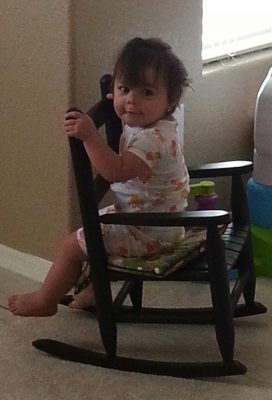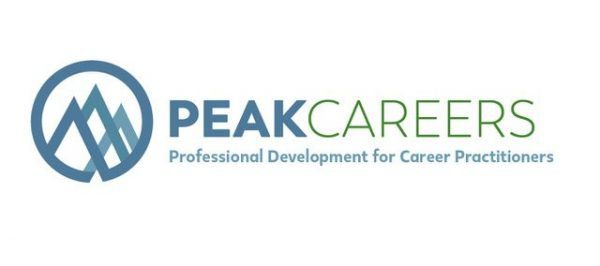
In my first blog on this topic I spoke about:
[1] helping people embrace chance events in their lives
[2] taking action, and
[3] encouraging curiosity.
Let’s talk about what else you can do as a career advisor to assist people in “intentionally” creating “serendipitous” events to create opportunity by changing their perspective of the situation.
4] One “gift” we have as career advisors is the ability to reframe events in peoples’ lives in such a way to make it look like an opportunity. (See my article, Advisors Are The Wizard of Oz http://bit.ly/12nmpIA ). People bring us their view of unplanned events or surprises in their lives that, all too often, are viewed as obstacles. Our job is to help reframe the event and to encourage them to look at it as a career opportunity.
Getting laid off from a job, changing their major because “it didn’t work out”, or being rejected again, are events out of their control in most cases. The old school answer “things happen for a reason” is close but not exactly what people need to hear.
As career advisors we can ask:
- What did you learn from this?
- How can you look at this in a positive light?
- What can you do next time?
- Have you ever thought about focusing on your strengths and considering a different or slightly different path?
- Are there other positions at this company that looked interesting?
- If you can’t-do that major, what attracted you to it in the first place? Are there other majors that share those same traits?
- Taking these events and encouraging people to look at them differently is the first step in helping them view unexpected events as opportunity.
5] Perceived barriers versus real barriers. In order to create “intentional serendipitous opportunities,” we need to help people overcome barriers. Some of those barriers are real, no transportation, no internet service, lack of specific skills, but often people create barriers when none exist.
When students say “I can’t possibly call that alumni up and ask for an informational interview” or “I can’t apply to that position, they are asking for 2 years experience”, we can have the conversation of creating opportunities by taking action and breaking down their thinking into parts.
Career advisors can ask:
- What would happen if you DID call the alumni? You came to see ME today and you didn’t know me before, why do you think you can’t call the alum?
- Would you like to practice contacting people for information? If so, try these 4 questions with one of the faculty in your department that you don’t know well.
- What would happen if you applied for the position and they viewed your volunteer experience and sports involvement as “experience”?
- What if all the other candidates are not good fits to the company? What if YOU are a great fit for their company? If you don’t apply … you’ll never know. What is the downside to applying?
I have found that MOST people have more perceived barriers than real ones.
6] Eeyore is here, now what? One of the most difficult people to help create opportunity are the pessimists out there. Why? because they view everything as a barrier. What these folks really need are 3 things, persistence, risk-taking, and flexibility.
Too often people simply give up too quickly. They may need help in being persistent. After grad school, I applied to well over 50 jobs before Colby College hired me. I taped ALL of my rejection letters on my bedroom door and my roommate could not figure out why the heck I would do that???? I said, something WILL happen and I don’t want to forget all the hard work I put into this. We need to encourage people to keep going even in the face of repeated denials or dead ends.
As I stated in Intentional Serendipity part 1, taking ACTION is required in creating opportunity. Many people are adverse to risk-taking and we need to help them move outside their comfort zones and step into the unknown. At least a little bit into it. Some people will need to step slowly, like my above example of meeting with a faculty member in their department they don’t know well. When you take a risk you create new opportunity and that is a great lesson for people to learn.
Finally, we can help people be flexible. All too often people get set in their ways and have told everyone “I am going to be a ____________” and when they realize it won’t happen they don’t know how to save face. When they get asked “What are you majoring in?” they don’t know what to say.
Our job is to help people reframe this change of plans as a new opportunity. Good questions to ask:
- How can you reframe this change you’ve made in a positive light?
- What if you said, “I’ve changed my major from ____________ and am now exploring ways to use the following skills in a different field”
Explain that they are not UNDECIDED, they have eliminated one major and now need to focus on what skills they want to use in the next job and then tell everyone they know.
I talk about related occupations all the time. If they liked their first major, there must have been a reason. Now let’s figure WHY they liked it or why they DISliked and work at identifying related occupations that play to their strengths.
QUESTION: What are some ways you help people change the perspective of their situation?
—————————————–
If you would like to really learn more about this topic of using happenstance in career advising check out this 5-week discussion-based online seminar for career practitioners. Visit http://bit.ly/VJp0Hl
Jim Peacock is the Principal at Peak-Careers Consulting and writes a monthly newsletter for career practitioners. Peak-Careers offers discussion-based online seminars for career practitioners focused on meeting continuing education needs for CCSP, GCDF and BCC certified professionals as well as workshops for career practitioners and individual career coaching.
Sign up here to receive my TOP 10 TIPS WHEN WORKING WITH AN UNDECIDED PERSON. You can also receive the career practitioners newsletter which includes a variety of career topics, industry news, interesting events, and more.



Leave a Reply